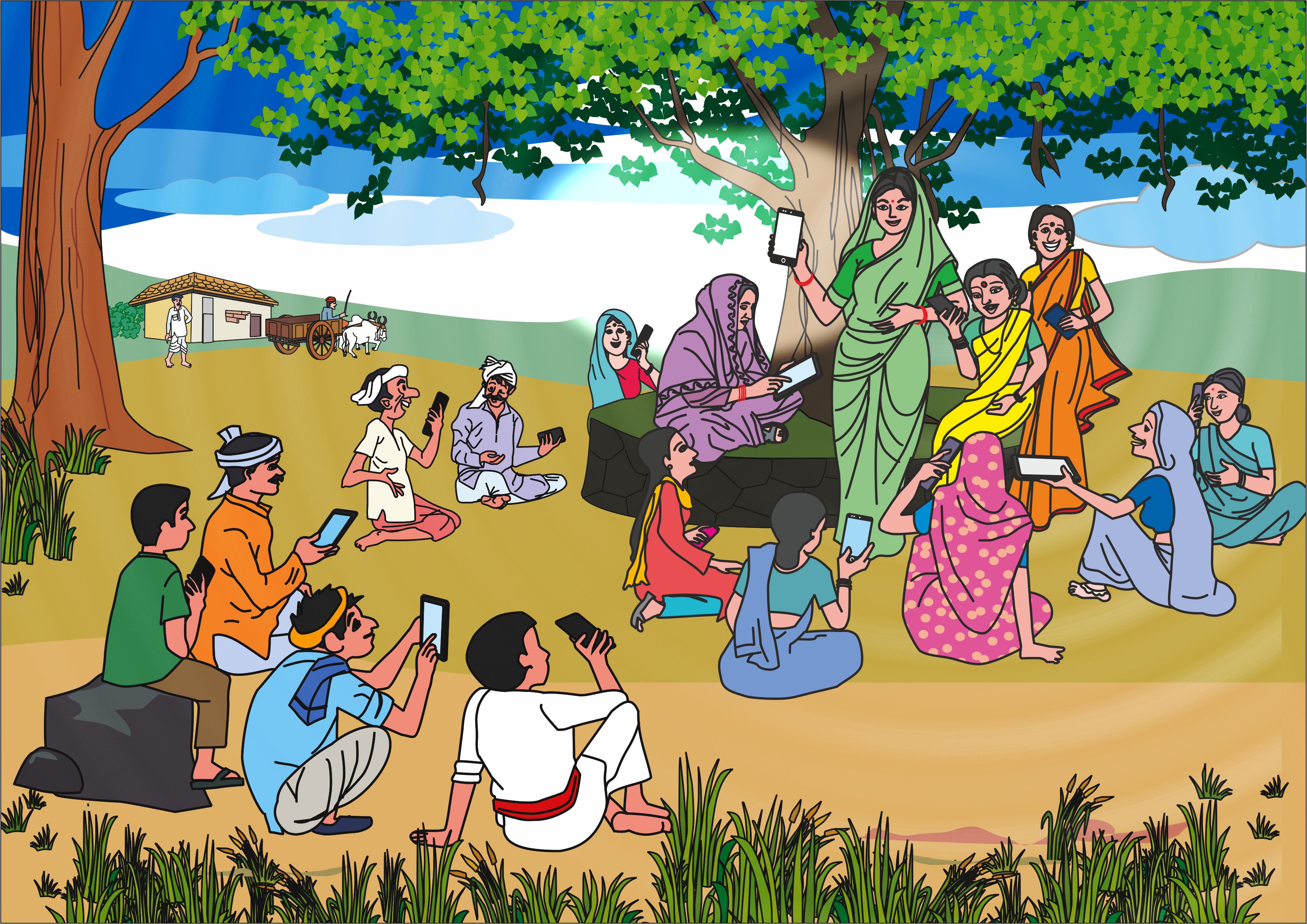|
Digital disruption has transformed daily life in both developed and developing countries. With the experience of the COVID-19 pandemic in the last couple of years, we have seen a stronger pace forward with technological solutions and the weaker sections being left behind, struggling to even maintain the status quo. Phones, computers, digital transactions, and application-based last-mile delivery services have created dependency of people who could not access technology on the ones who have the access. With a vision of empowering 125 crore Indian citizens, the Digital India Mission aims to create a digital footprint for every individual (Chaudhari 2022). Even though my country is adding around 110 million smartphone users annually and is gearing to launch Aadhaar-compliant devices with biometric authentication built into phones and tablets, we still are not ready to match the pace of this transformation. The significance of the JAM trinity – Jan Dhan Yojana, Aadhaar, and Mobile number – is going to be felt soon when transactions are enabled using Aadhaar and biometric authentication, all digital. These days, transfers of most government subsidies or fund disbursement are done digitally. The purpose of this fast-pacing is to improve distribution and transparency. This purpose would be met if and when third parties are ruled out and the actual benefit is absorbed at the grassroots. For that, access to information about the technology is a necessary condition. This digital disruption is facing complex social challenges that need to be addressed by the collective action of both the government and the civil society. There are new-age issues like cyber security and, at the same time, we have to battle with centuries-old gender bias. When we are gearing towards local e-governance, how would we ensure inclusive participation? There must be a very strong gender-sensitive approach; bridging the digital gender gap is not just important but vital to ensure digital equity. To quote an example from Development Alternatives’ recent engagement with Crisil Infrastructure Advisory, in energy reform efforts under an Asian Development Bank-funded project, Uttar Pradesh Power Corporation Limited and Uttar Pradesh State Livelihood Mission together came up with the innovative idea of involving self-help group (SHG) women as bill collection agents. Although most of these women collection agents have smartphones and use the application well, there are still some who get this done by their children or husbands. It might solve the purpose of bill collection, but it will defeat the core of digital equity until women have free access and knowledge to operate smartphones themselves. In fact, in the absence of the right knowledge and know-how, digital advancement can expose the grassroots communities to exploitation and deceit. This digital disruption has taken us into a Canadian philosopher Marshall McLuhan’s ‘glocal times’, in which entrepreneurs at the grassroots can seek funding from global accelerator programmes, provided they have the capacity to do so. Technology solutions do match the language or ethos of rural Indians too. Capacities of rural India need to be built to take charge and to make use of this digital disruption. Our tech age is here, but we need our people to drive it and thrive on it. With illiterate adults, gender biases, and the lack of informed citizenry, we might end up opening another dimension of inequity, that is, a huge digital divide that separates the rural from the urban, the mainland from the grassroots, men from women, and so on. What this digital disruption needs in India are humility from the administration, grit from the businesses and willpower from civil society. At Development Alternatives, as an organisation committed to sustainable development solutions, we are always looking eagerly for collaborations to deploy solutions that aid this digital disruption for a better tomorrow. Reference Chaudhari, P.
2022. Government community cloud serves the “Digital India Mission”.
Details available at https://www.esds.co.in/blog/government-community-cloud-serves-the-digital-india-mission/,
last accessed on 27 August, 2022.
Jyoti Sharma |
